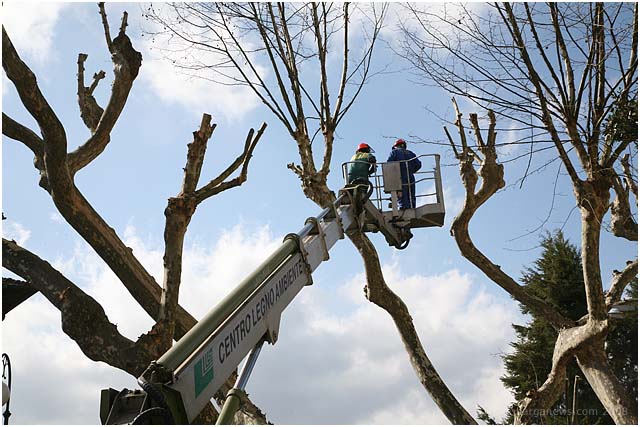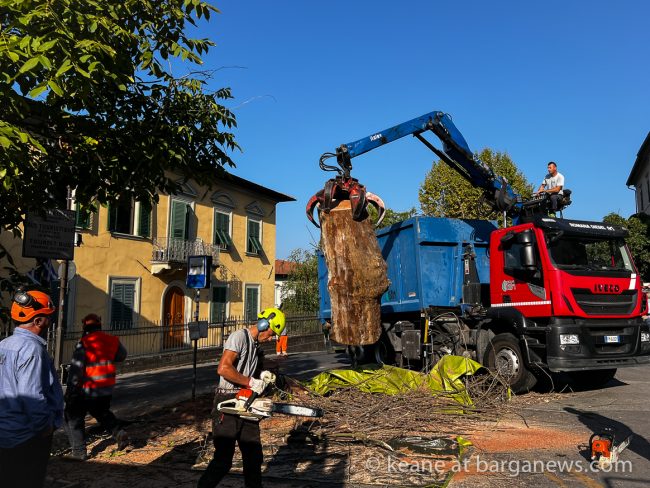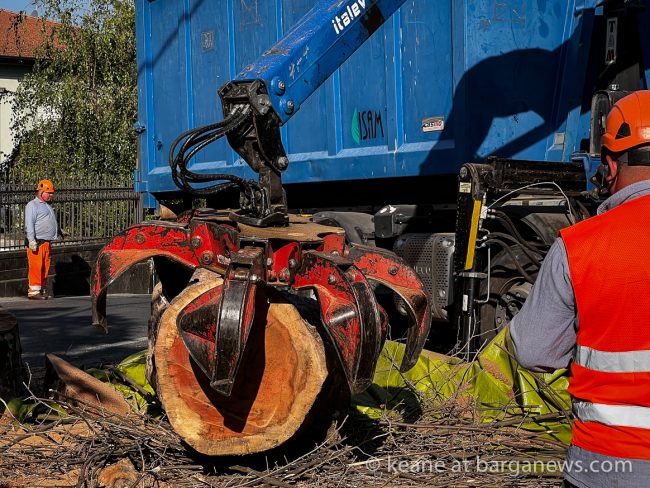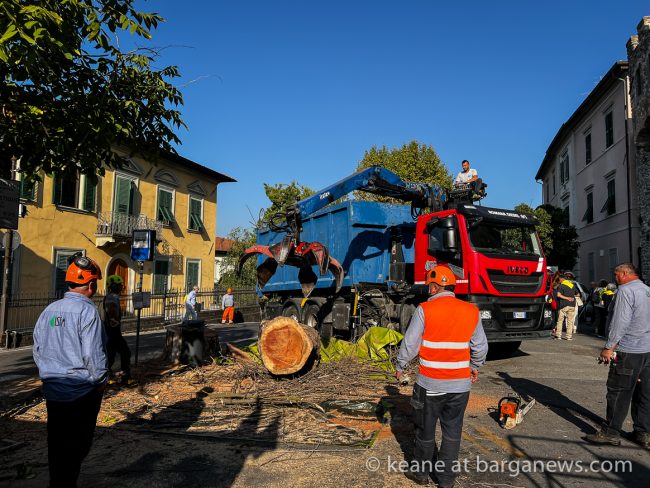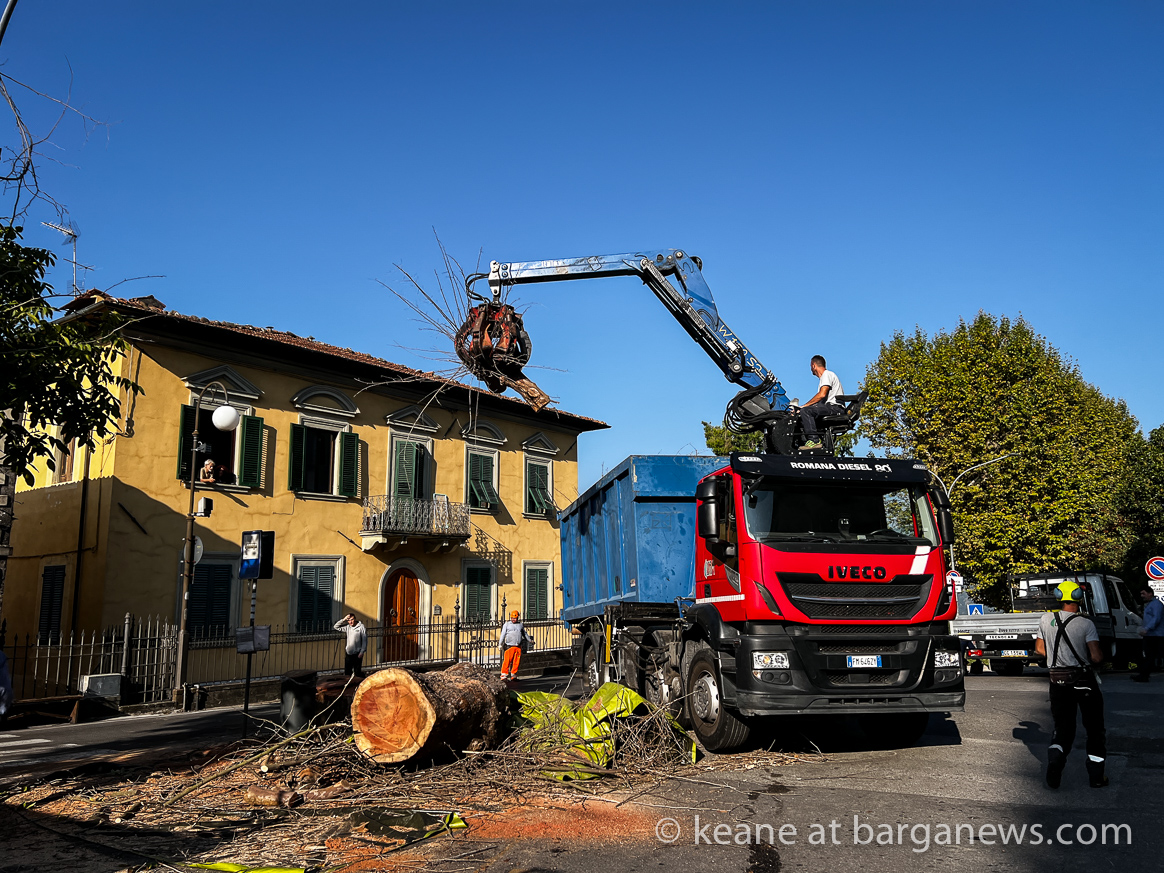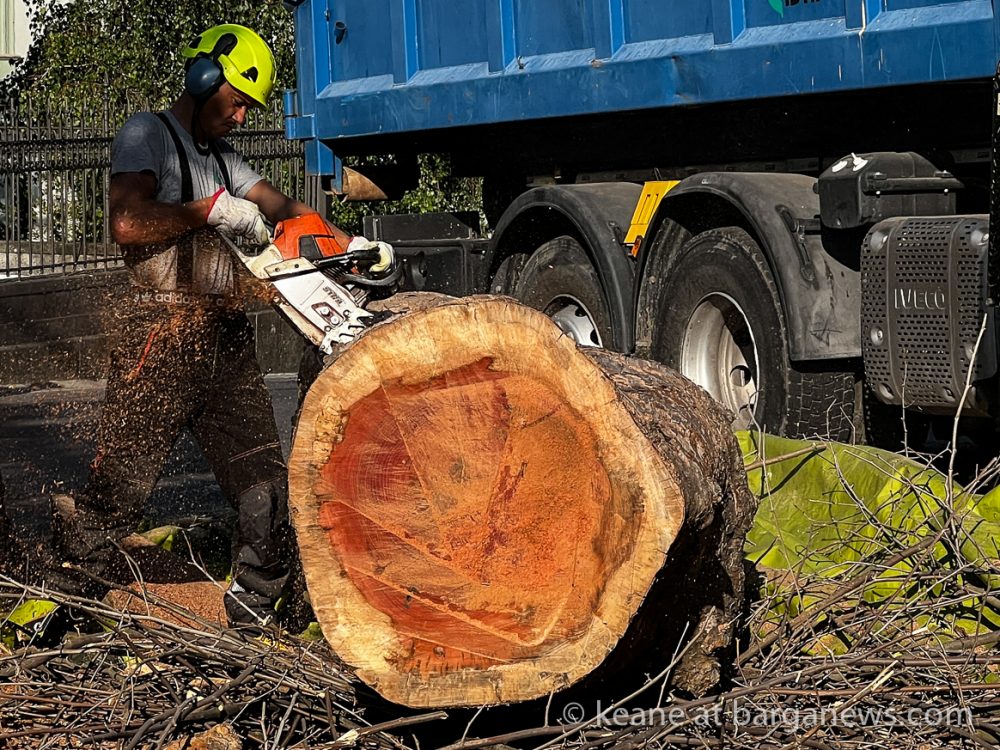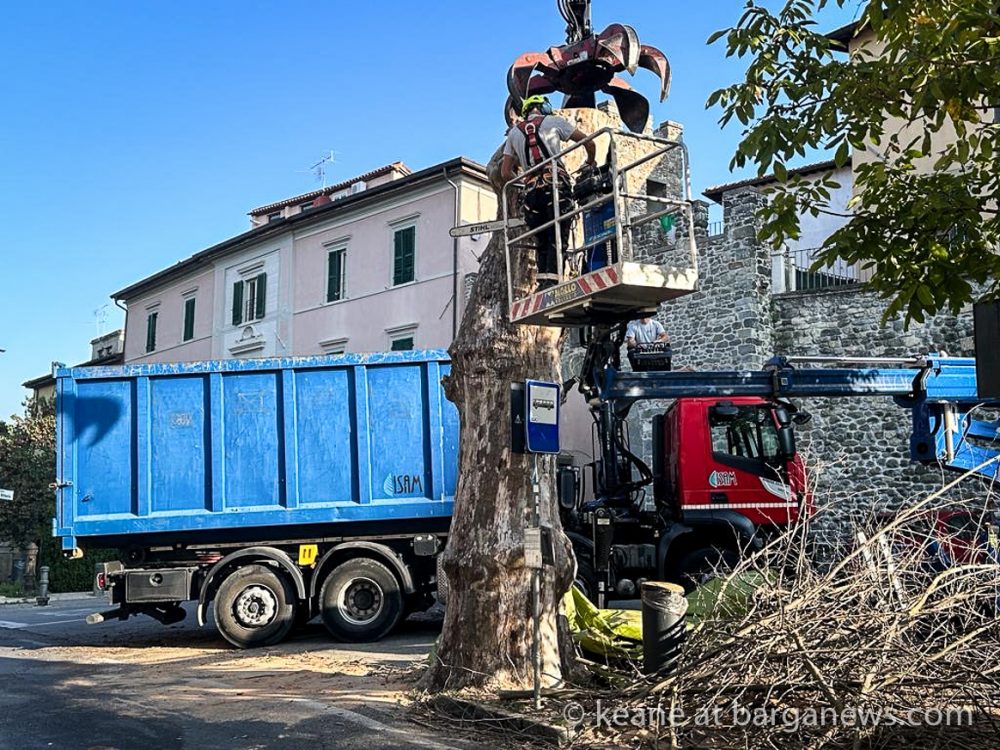In March of 2008 we published an article entitled ” Timing of pruning Plane trees questioned”
In that article we said sometimes the only thing one can do is cross your fingers and hope.
Only four days previous to those words we wrote an article about the plight of the plane trees in this area which are gradually succumbing to an encroaching fungus. (article here) – the canker stain fungus
In that article we wrote that just a very small wound is enough to allow the fungus to invade the plant tissue and start the infective process.
The parasite can be invade the tree at various levels including on the main or secondary branches subject to frequent pruning.
We also wrote that it was probably only a question of time before the fungus makes its way up the mountainside to Barga.
In fact in 2019 and then again in 2011 (article here) some of those plane trees on the Fosso succumbed to the canker stain fungus and were cut down.
This morning one of the still standing plane trees just outside the Paolo Gas bar which had been gradually dying was cut down and removed.
The cause of canker stain of plane trees – the deadly silent menace that is decimating the plane tree population in Tuscany is the fungus Ceratocystis fimbriata Ell. et Halsted, f.sp. platani Walter (=Cfp) (Ascomycotina, Ophiostomatales)
So how does the fungus do its dirty work ? Even a very small wound is enough to allow the mycelium to invade the plant tissue and start the infective process.The parasite can invade the tree at various levels: on the main or secondary branches subject to frequent pruning; on the trunk, always exposed to wounds from various causes, especially near ground-level; and on roots that emerge above-ground, as occurs with trees growing in compacted and anaerobic soils that are frequently encountered in street and city plantings.
In the 1940’s canker stain ravaged urban plantings of plane trees in the larger American cities along the Atlantic coast. During the second World War wood from infected trees was used to package materials for the war effort, and this is probably how the pathogen was introduced to the European continent, giving rise to the processes of infection here.
This supposition is borne out by the fact that the first centres of infection in Europe were in or near the major port cities: Naples, Livorno, Syracuse, Marseilles and Barcelona, which were very active during and after the second World War. It is likely that at first only one of these ports became ‘infected’ with the parasite from overseas, and that from this single point it spread out to other Mediterranean port cities.
The first epicentre of the disease in Italy is thought to have been the Naples-Caserta area (Cristinzio et al., 1973); this hypothesis is confirmed by the fact that, when the disease was detected for the first time at Forte dei Marmi in Tuscany, it had already killed many of the 200 year-old planes lining the Vialone Carlo III, the broad avenue that leads to the Palace of Caserta.
Canker stain did not assume an epidemic pattern until several years later, but then it spread in a dramatic manner through Italian cities, as it had done in North America before. A survey from Forte dei Marmi revealed that in the 20 year period 1972-1991, 90% of all planes there became infected and died. Subsequently the disease spread out from Forte dei Marmi to much of Versilia and to many towns of Tuscany: Massa Carrara, Lucca, Pisa, Livorno and Florence. – source; Journal of Plant Pathology (1999)
 |
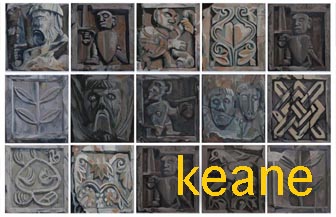 |
 |
 |
Nel marzo del 2008 abbiamo pubblicato un articolo intitolato “La tempistica della potatura degli alberi di pioppo messa in discussione”.
In quell’articolo abbiamo affermato che a volte l’unica cosa che si può fare è incrociare le dita e sperare.
Solo quattro giorni prima di quelle parole, abbiamo scritto un articolo sulla difficile situazione degli alberi di pioppo in questa zona, che stanno gradualmente cedendo a un fungo invadente (articolo qui) – il fungo della maculatura del pioppo.
Abbiamo pubblicato immagini di alberi di pioppo colpiti che venivano abbattuti appena sotto Barga sulla strada per Gallicano. In quell’articolo abbiamo scritto che basta una ferita molto piccola per consentire al fungo di invadere il tessuto vegetale e avviare il processo infettivo.
Il parassita può invadere l’albero a vari livelli, compresi i rami principali o secondari soggetti a frequenti potature. Abbiamo anche scritto che probabilmente era solo una questione di tempo prima che il fungo si diffondesse sul versante montano fino a Barga.
Infatti, nel 2019 e poi nuovamente nel 2011 (articolo qui), alcuni di quegli alberi di pioppo sul Fosso cedettero al fungo della maculatura del pioppo e furono abbattuti.
Questa mattina uno dei pochi alberi di pioppo ancora in piedi appena fuori dal bar Paolo Gas, che stava gradualmente morendo, è stato abbattuto e rimosso.
La causa della maculatura del pioppo, la minaccia silenziosa e mortale che sta decimando la popolazione di pioppi in Toscana, è il fungo Ceratocystis fimbriata Ell. et Halsted, f.sp. platani Walter (=Cfp) (Ascomycotina, Ophiostomatales).
Ma come fa il fungo a compiere il suo sporco lavoro? Anche una ferita molto piccola è sufficiente per permettere al micelio di invadere il tessuto vegetale e avviare il processo infettivo. Il parassita può invadere l’albero a vari livelli: sui rami principali o secondari soggetti a frequenti potature, sul tronco, sempre esposto a ferite da varie cause, specialmente vicino al suolo, e sulle radici che emergono sopra il terreno, come accade con gli alberi che crescono in terreni compatti e anaerobici spesso presenti nelle piantagioni stradali e urbane.
Negli anni ’40, la maculatura del pioppo devastò le piantagioni urbane di pioppi nelle maggiori città americane lungo la costa atlantica. Durante la seconda guerra mondiale, il legno proveniente dagli alberi infetti venne utilizzato per confezionare materiali per lo sforzo bellico, ed è probabile che sia così che il patogeno sia stato introdotto nel continente europeo, dando origine ai processi di infezione qui.
Questa supposizione è supportata dal fatto che i primi focolai di infezione in Europa si trovavano o vicino alle principali città portuali: Napoli, Livorno, Siracusa, Marsiglia e Barcellona, che erano molto attive durante e dopo la seconda guerra mondiale. È probabile che inizialmente solo uno di questi porti si sia “infettato” con il parassita proveniente dall’estero, e da questo punto singolo si sia diffuso ad altre città portuali mediterranee.
Si ritiene che il primo epicentro della malattia in Italia sia stato l’area di Napoli-Caserta (Cristinzio et al., 1973); questa ipotesi è confermata dal fatto che, quando la malattia è stata rilevata per la prima volta a Forte dei Marmi in Toscana, aveva già ucciso molti dei pioppi di 200 anni che fiancheggiavano il Vialone Carlo III, l’ampia via che conduce al Palazzo di Caserta.
La maculatura del pioppo non ha assunto un modello epidemico fino a diversi anni dopo, ma poi si è diffusa in modo drammatico attraverso le città italiane, come era accaduto in Nord America in precedenza. Un sondaggio a Forte dei Marmi ha rivelato che nel periodo di 20 anni dal 1972 al 1991, il 90% di tutti i pioppi là si è infettato e morto. Successivamente la malattia si è diffusa da Forte dei Marmi a gran parte di Versilia e a molte città della Toscana: Massa Carrara, Lucca, Pisa, Livorno e Firenze. – Fonte: Journal of Plant Pathology (1999)



